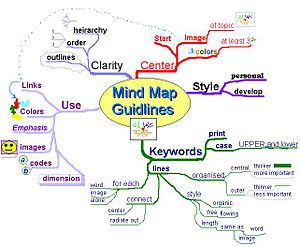Toondoo
- Free, no installation, and the fastest sign-up procedure of any web 2.0 site.
- Flexible – you can resize, flip or rotate the stock characters; doodle freehand on top of a picture; and use the character builder to make fairly specific faces.
- Speedy
- Public or private – you can re-edit the strip, description and tags, or delete the strip, but anyone who discovers the strip URL can view the strip (until it is deleted).
- Kid-friendly –
 BitStrips
BitStrips
- Free, no installation, simple signup
- Flexible – you can vary the pose and mood of the avatars; but other aspects are very limited – for example, the background is limited to plain colours.
- Speedy
- Public or private. You can optionally allow friends or anyone in the world to edit.
 Mai’Nada
Mai’Nada
http://www.mainada.net/comics/
- Free, no installation required.
- Flexible – you draw your own scenes, freehand with the mouse…
- Animated – yes, this is stop-motion animation!
- Tedious – it takes real commitment to make dozens of similar drawings, in order to create a decent animation.
- Public or private
- Teenage zone – some of the content in the users’ gallery might be too grim, gross or gratuitous for kids.
Quicktoons
- Free, no installation required
- Simple – you choose from a very small set of characters, scenes and props to generate a strip in very few steps.
- Slow – actions have a very noticeable lag that does sap the fun a bit.
- Target kids – easy
 WittyComics
WittyComics
- Free, no installation required.
- Simple – you choose from an extremely limited set of characters and scenes and add your words.
- Bring your own wit.
- Quick – few decisions to make.
- Target adult writers – you are invited to write and publish a three frame strip with witty dialogue.
 Strip Generator
Strip Generator
- Free, no installation required.
- Even more constrained in style, with virtually no scope for showing action, and no background, but faster than anything else.
- Focus is on dialogue. Action is not really possible.
- Boys seem to do this style of strip more than girls. Sample
Comic Creator
http://www.readwritethink.org/materials/comic/index.html
- Free, no sign in.
- Extremely easy. Very limited. Few characters, backgrounds, objects
- Can print but cannot save or publish
- Reviewed by Ben Rimes in 2005 on http://www.techsavvyed.net/?p=43
Scouts Comic Creator
http://www.boyslife.org/games/online-games/235/comic-creator/
- Free, no sign in.
- Very limited. Few characters, backgrounds, objects.
- Unexplained buttons on screen. I cannot get background selection to work.






 Mind maps
Mind maps

 Miss Zilch, did you really mean that?
Miss Zilch, did you really mean that? Why do I let my children do homework? What do I want my students to gain from homework?
Why do I let my children do homework? What do I want my students to gain from homework? Sometimes I don’t start a task until the risks of further delay have become more stressful than the doing. There is always a seemingly legitimate distraction (like blogging!) available…
Sometimes I don’t start a task until the risks of further delay have become more stressful than the doing. There is always a seemingly legitimate distraction (like blogging!) available…

 TouchTypers
TouchTypers